Abstract
We report here on an investigation of net nitrate and proton fluxes in root cells of maize (Zea mays L.) seedlings grown without (noninduced) and with (induced) 0.1 millimolar nitrate. A microelectrode system described previously (IA Newman, LV Kochian, MA Grusak, WJ Lucas [1987] Plant Physiol 84: 1177-1184) was utilized to quantify net ionic fluxes from the measurement of electrochemical potential gradients for NO3− and H+ within the unstirred layer at the root surface. The nitrate-inducibility, pH dependence, and concentration dependence of net NO3− uptake correlated quite closely with the electrical response of maize roots to nitrate under the same experimental conditions (as described in PR McClure, LV Kochian, RM Spanswick, JE Shaff [1990] Plant Physiol 93: 281-289). Additionally, it was found that potential inhibitors of the plasmalemma H+-ATPase (vandate, diethylstilbestrol), which were shown to abolish the electrical response to NO3− (in PR McClure, LV Kochian, RM Spanswick, JE Shaff [1990] Plant Physiol 93: 281-289), dramatically inhibited NO3− absorption. These results strongly indicate that the NO3− electrical response is due to the operation of a NO3− transport system in the plasmalemma of maize root cells. Furthermore, the results from the H+-ATPase inhibitor studies indicate that the NO3− transport system is linked to the H+-ATPase, presumably as a NO3−/H+ symport. This is further supported by the pH response of the NO3− transport system (inhibition at alkaline pH values) and the change in net H+ flux from a moderate efflux in the absence of NO3−, to zero net H+ flux after exposing the maize root to exogenous nitrate. Although these results can be explained by other interpretations, the simplest model that fits both the electrical responses and the NO3−/H+ flux data is a NO3−/H+ symport with a NO3−:H+ flux stoichiometry >1, whose operation results in the stimulation of the H+-ATPase due to the influx of protons through the cotransport system.
Full text
PDF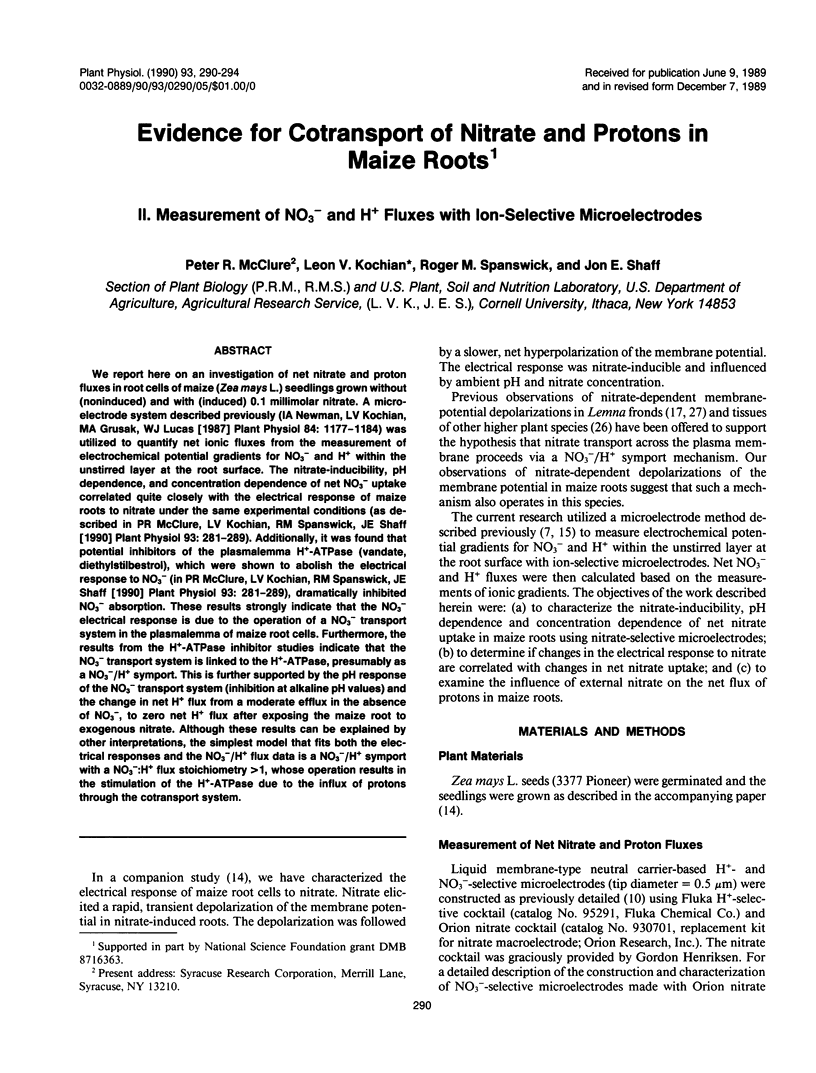
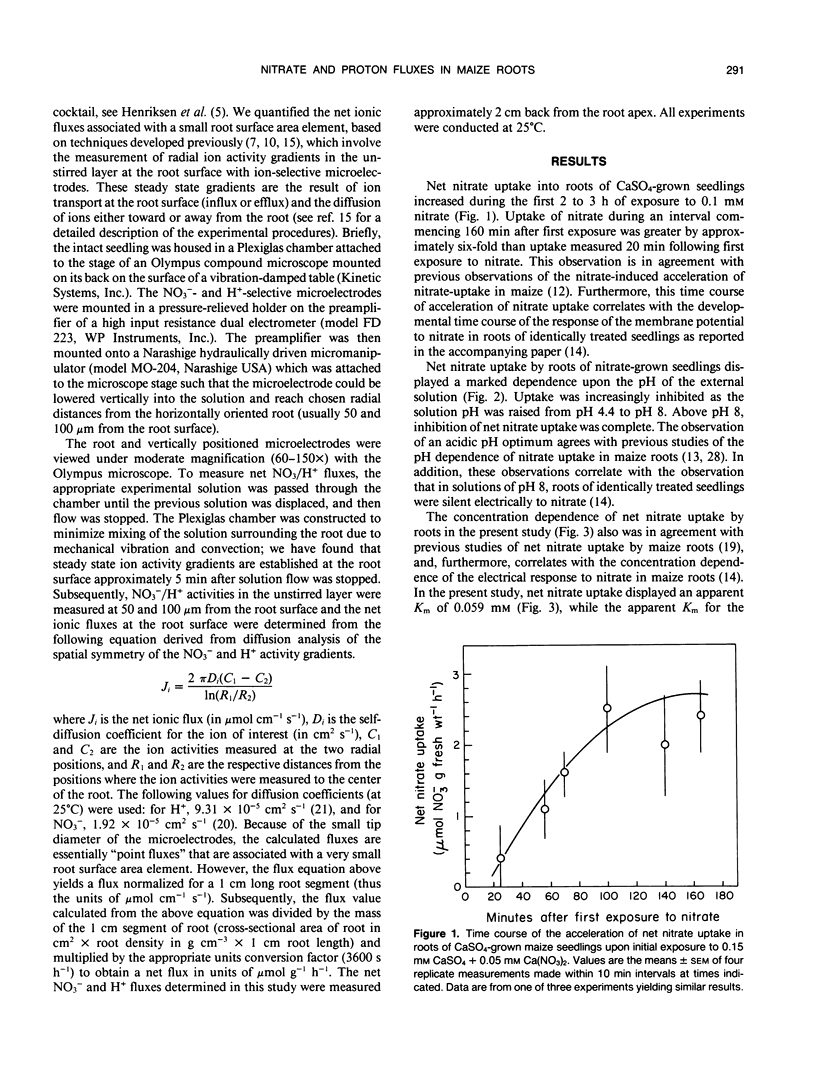
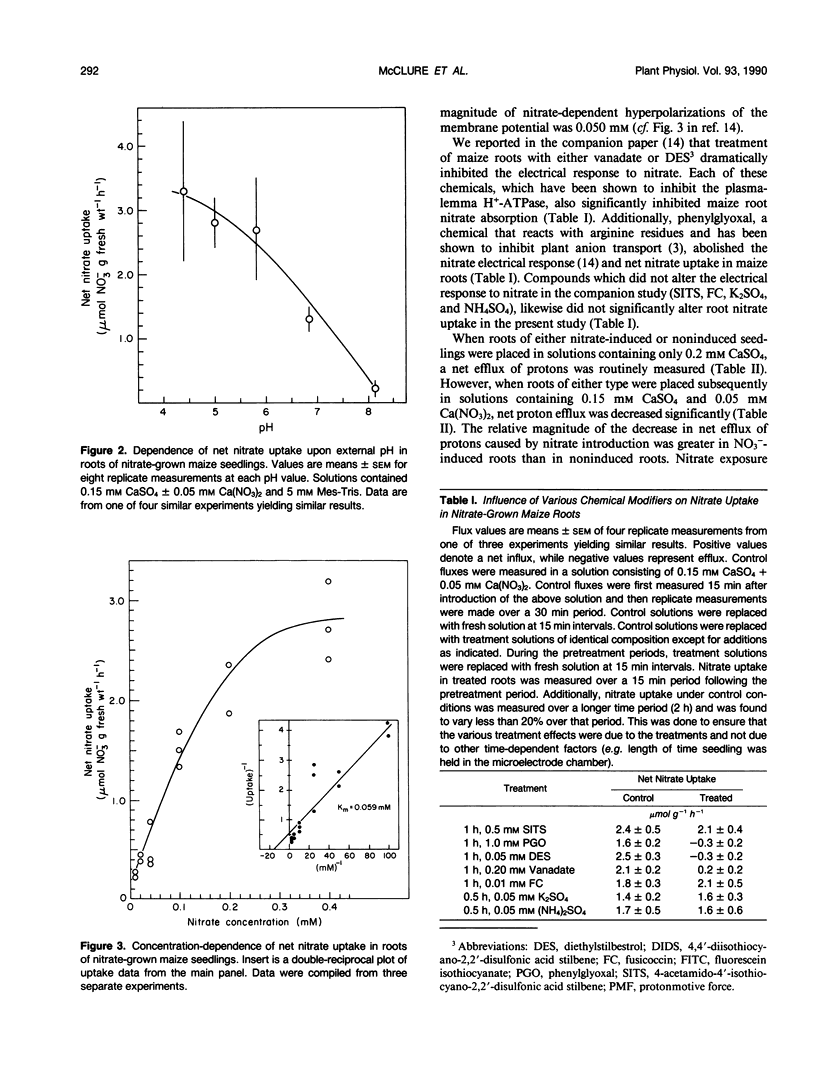
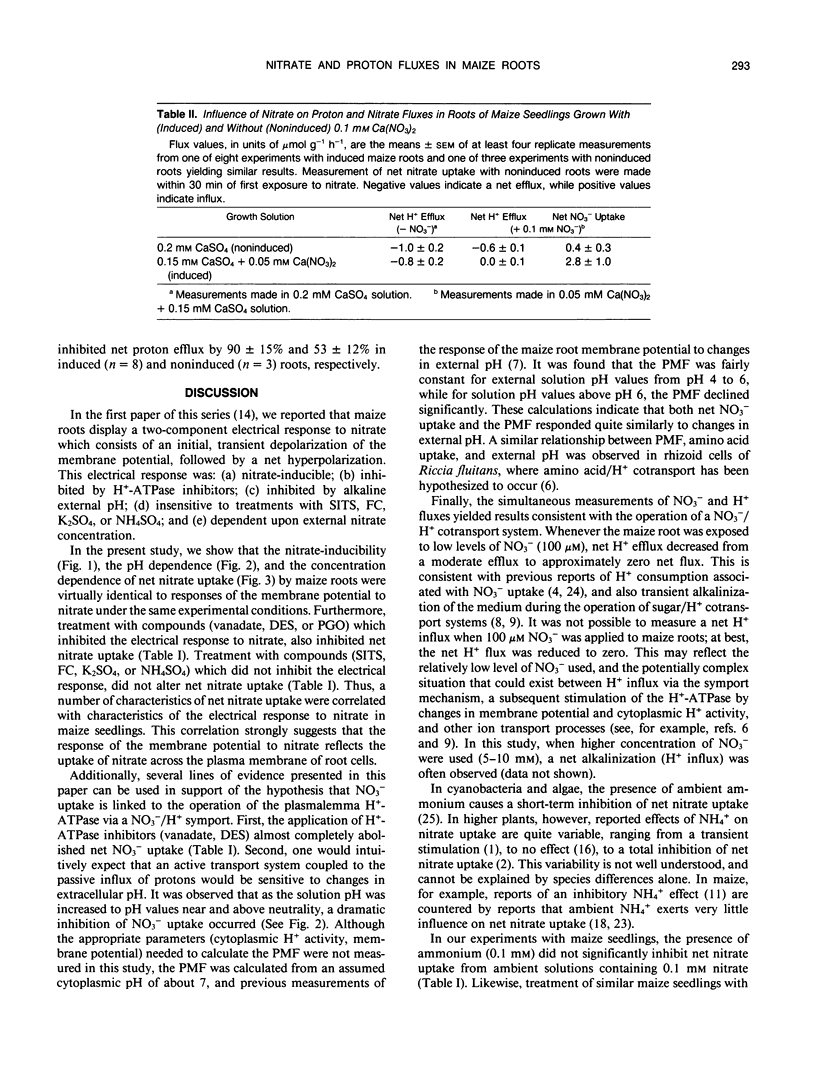
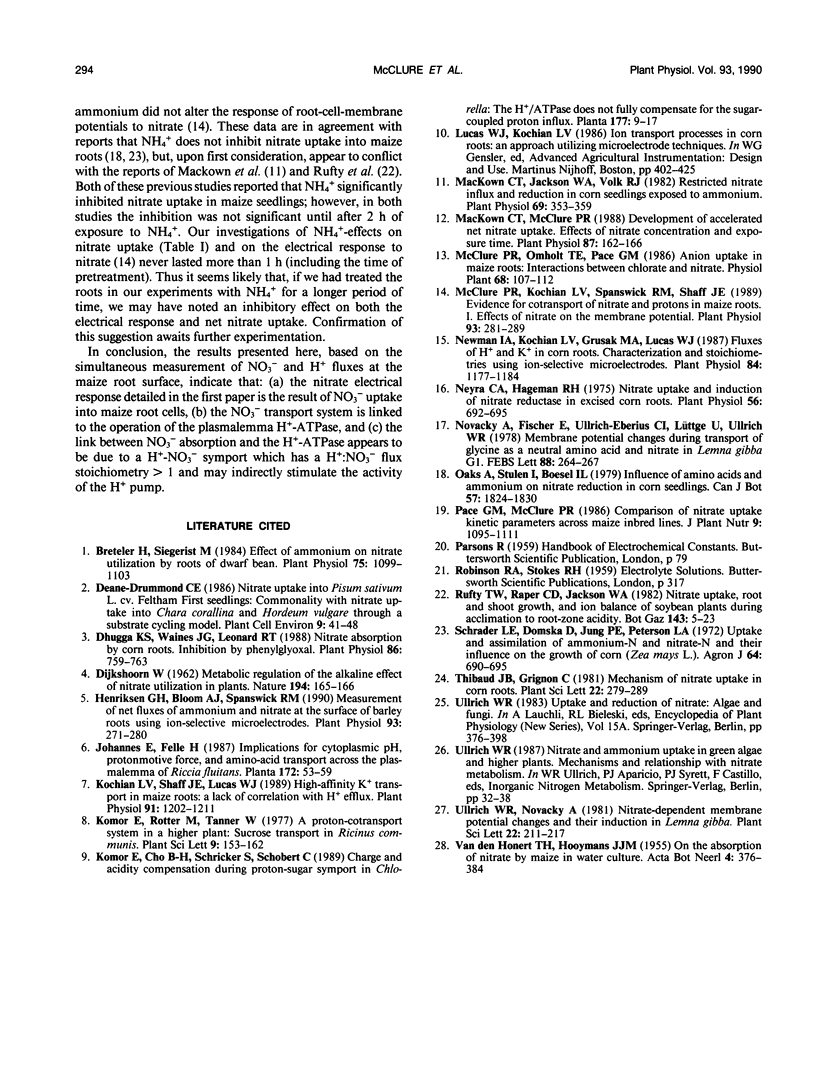
Selected References
These references are in PubMed. This may not be the complete list of references from this article.
- Breteler H., Siegerist M. Effect of ammonium on nitrate utilization by roots of dwarf bean. Plant Physiol. 1984 Aug;75(4):1099–1103. doi: 10.1104/pp.75.4.1099. [DOI] [PMC free article] [PubMed] [Google Scholar]
- Cole C. E. Preliminary Report on Influenza Epidemic at Bramshott in September-October, 1918. Can Med Assoc J. 1919 Jan;9(1):41–48. [PMC free article] [PubMed] [Google Scholar]
- Dhugga K. S., Waines J. G., Leonard R. T. Nitrate absorption by corn roots : inhibition by phenylglyoxal. Plant Physiol. 1988 Mar;86(3):759–763. doi: 10.1104/pp.86.3.759. [DOI] [PMC free article] [PubMed] [Google Scholar]
- Henriksen G. H., Bloom A. J., Spanswick R. M. Measurement of net fluxes of ammonium and nitrate at the surface of barley roots using ion-selective microelectrodes. Plant Physiol. 1990 May;93(1):271–280. doi: 10.1104/pp.93.1.271. [DOI] [PMC free article] [PubMed] [Google Scholar]
- Kochian L. V., Shaff J. E., Lucas W. J. High affinity k uptake in maize roots: a lack of coupling with h efflux. Plant Physiol. 1989 Nov;91(3):1202–1211. doi: 10.1104/pp.91.3.1202. [DOI] [PMC free article] [PubMed] [Google Scholar]
- Mackown C. T., Jackson W. A., Volk R. J. Restricted nitrate influx and reduction in corn seedlings exposed to ammonium. Plant Physiol. 1982 Feb;69(2):353–359. doi: 10.1104/pp.69.2.353. [DOI] [PMC free article] [PubMed] [Google Scholar]
- Mackown C. T., McClure P. R. Development of accelerated net nitrate uptake : effects of nitrate concentration and exposure time. Plant Physiol. 1988 May;87(1):162–166. doi: 10.1104/pp.87.1.162. [DOI] [PMC free article] [PubMed] [Google Scholar]
- McClure P. R., Kochian L. V., Spanswick R. M., Shaff J. E. Evidence for cotransport of nitrate and protons in maize roots : I. Effects of nitrate on the membrane potential. Plant Physiol. 1990 May;93(1):281–289. doi: 10.1104/pp.93.1.281. [DOI] [PMC free article] [PubMed] [Google Scholar]
- Newman I. A., Kochian L. V., Grusak M. A., Lucas W. J. Fluxes of h and k in corn roots : characterization and stoichiometries using ion-selective microelectrodes. Plant Physiol. 1987 Aug;84(4):1177–1184. doi: 10.1104/pp.84.4.1177. [DOI] [PMC free article] [PubMed] [Google Scholar]
- Neyra C. A., Hageman R. H. Nitrate uptake and induction of nitrate reductase in excised corn roots. Plant Physiol. 1975 Nov;56(5):692–695. doi: 10.1104/pp.56.5.692. [DOI] [PMC free article] [PubMed] [Google Scholar]


